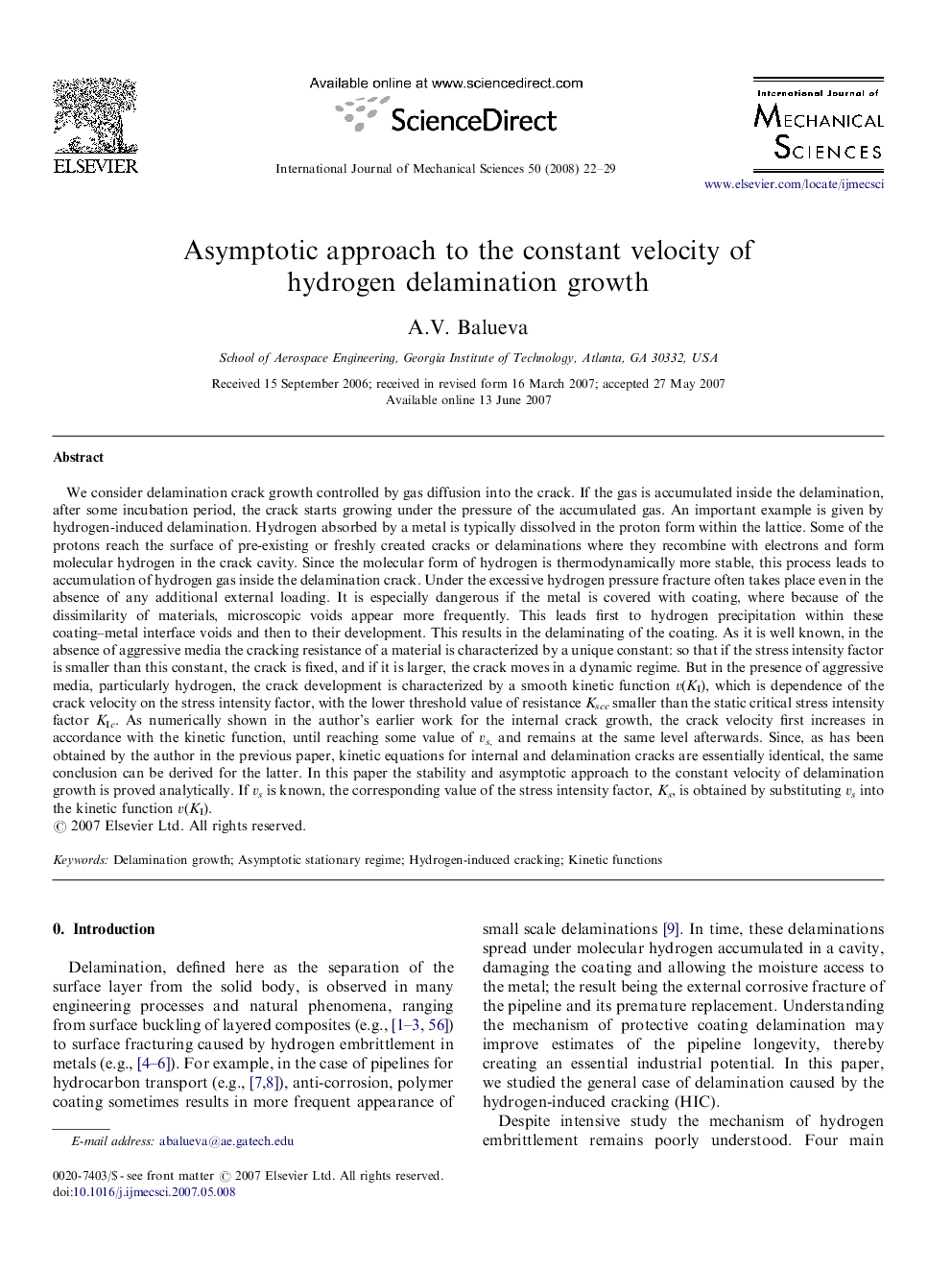| Article ID | Journal | Published Year | Pages | File Type |
|---|---|---|---|---|
| 784170 | International Journal of Mechanical Sciences | 2008 | 8 Pages |
We consider delamination crack growth controlled by gas diffusion into the crack. If the gas is accumulated inside the delamination, after some incubation period, the crack starts growing under the pressure of the accumulated gas. An important example is given by hydrogen-induced delamination. Hydrogen absorbed by a metal is typically dissolved in the proton form within the lattice. Some of the protons reach the surface of pre-existing or freshly created cracks or delaminations where they recombine with electrons and form molecular hydrogen in the crack cavity. Since the molecular form of hydrogen is thermodynamically more stable, this process leads to accumulation of hydrogen gas inside the delamination crack. Under the excessive hydrogen pressure fracture often takes place even in the absence of any additional external loading. It is especially dangerous if the metal is covered with coating, where because of the dissimilarity of materials, microscopic voids appear more frequently. This leads first to hydrogen precipitation within these coating–metal interface voids and then to their development. This results in the delaminating of the coating. As it is well known, in the absence of aggressive media the cracking resistance of a material is characterized by a unique constant: so that if the stress intensity factor is smaller than this constant, the crack is fixed, and if it is larger, the crack moves in a dynamic regime. But in the presence of aggressive media, particularly hydrogen, the crack development is characterized by a smooth kinetic function v(KI), which is dependence of the crack velocity on the stress intensity factor, with the lower threshold value of resistance Kscc smaller than the static critical stress intensity factor KIc. As numerically shown in the author's earlier work for the internal crack growth, the crack velocity first increases in accordance with the kinetic function, until reaching some value of vs, and remains at the same level afterwards. Since, as has been obtained by the author in the previous paper, kinetic equations for internal and delamination cracks are essentially identical, the same conclusion can be derived for the latter. In this paper the stability and asymptotic approach to the constant velocity of delamination growth is proved analytically. If vs is known, the corresponding value of the stress intensity factor, Ks, is obtained by substituting vs into the kinetic function v(KI).
